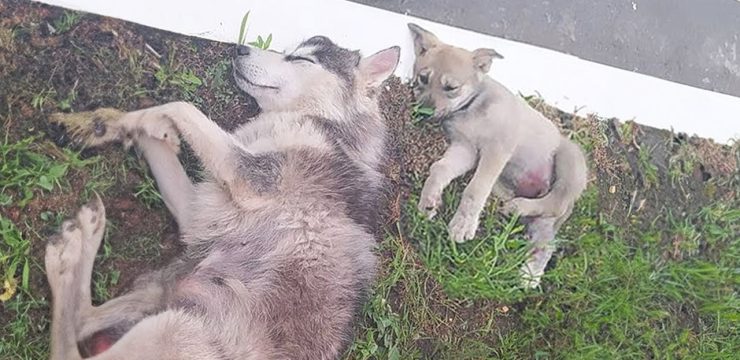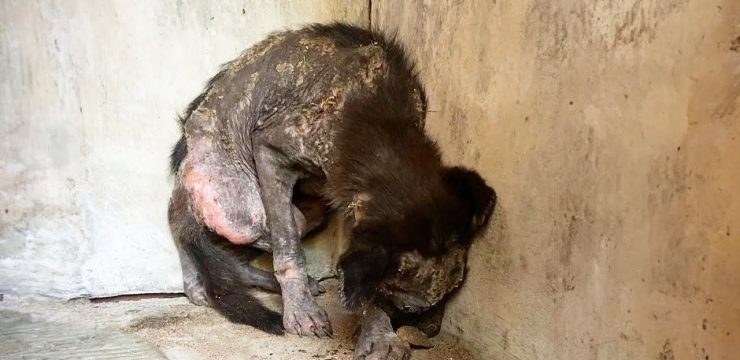While exploring the breathtaking trails of Popran National Park in Australia, Kym Beechey was soaking in the peaceful surroundings. It was one of those serene moments where the air is crisp, the sunlight filters through the trees, and everything feels still. With her camera ready and curiosity piqued, she slowly wandered the path, occasionally stopping to photograph the vibrant wildflowers and marvel at the calm beauty of nature. Like many nature lovers, she hoped for a lucky encounter with wildlife—perhaps a lizard basking in the sun or a colorful bird resting in the shade. What she didn’t expect was to stumble upon something so amusing it would become one of her most unforgettable outdoor experiences.

Kym had always struggled to capture birds on camera. They’re quick, easily startled, and rarely stay in one place long enough for a good shot. But on this day, as she admired the surrounding landscape, her eyes locked onto what appeared to be a small, owl-like bird perched motionless on a branch. It had a rounded, fluffy shape, soft-looking plumage, and an almost comical smile on its face. From a distance, it reminded her of a baby tawny frogmouth—a bird known in Australia for its wide, expressive face and uncanny resemblance to a cartoon character. The creature looked strangely content, as if it were smiling directly at her.
Thrilled at her unexpected discovery, Kym slowly reached for her phone, being extra careful not to scare the little bird away. She zoomed in, steadying her hand for the perfect photo, surprised that the bird hadn’t flinched or flown off. In fact, it hadn’t moved at all. That’s when she began to sense something odd.
Something about the bird didn’t feel right. It looked a little too still. The smile looked almost too perfect—like it had been carved. There were no small twitches, no blinking eyes, no puffing of feathers in the breeze. For a creature that seemed so alive, it was oddly lifeless.
And then it hit her.
This wasn’t a bird. It wasn’t alive at all.
She laughed out loud when the truth dawned on her: she had been fooled by a banksia pod.
What Kym thought was a cheerful baby bird turned out to be the woody seed pod of a banksia tree. Native to Australia and surrounding regions like New Zealand and Papua New Guinea, banksia trees are well-known for their distinct, cone-like seed pods. These pods can resemble a variety of odd shapes depending on their maturity, weathering, and the species of the tree. The pod she stumbled upon just happened to look like a smiling bird sitting on a branch.
Banksia pods are often compared to pine cones because of their texture and the way they grow, but they actually come from a completely different type of tree. These trees are part of the Proteaceae family and produce long, bottlebrush-like flowers before forming their iconic seed cones. Over time, the pods grow larger and tougher. When mature, they dry out and split open, releasing seeds into the wind or forest floor below. The way they split can sometimes create bizarre or humorous shapes—some even resembling faces, animals, or in Kym’s case, an adorable little bird.
One particular species, Banksia grandis, produces notably large and solid pods. In fact, they’re so sturdy that some artisans use them in woodcraft projects, carving them into decorative items or functional pieces. These unique shapes and the patterns they form make them especially appealing for artists and collectors alike.
Kym’s humorous misidentification is a perfect example of how nature often plays tricks on our senses. It also highlights how beauty in the wild doesn’t always come from the expected places. While she had hoped for a memorable wildlife photo, she ended up with something even better—a story that blends curiosity, humor, and the wonder of discovering something new in the great outdoors.
This experience also serves as a fun reminder of how the natural world constantly surprises us. In a time when so much of our day-to-day life is structured and predictable, moments like these remind us to slow down and look closely. What seems ordinary or familiar might actually be something entirely unexpected.
Many people have had similar moments—mistaking a rock for an animal, a twisted tree root for a snake, or a shadow for something lurking in the bushes. Nature has a way of blurring the lines between imagination and reality. And it’s often in those brief moments of confusion that we find the greatest delight.
For Kym, this wasn’t just a case of mistaken identity. It was a moment of connection—with nature, with her surroundings, and with the joy of discovering something unusual. Even without spotting any actual animals, her hike became one of her most memorable outings. The photo she captured may not feature a living creature, but it holds a special place in her heart and brings laughter every time she shares it.
So, have you ever mistaken a plant or an object for an animal in the wild? Maybe you’ve thought you saw a frog, only to realize it was a rock. Or perhaps a log looked like a lounging lizard from a distance. These little tricks of perception make exploring nature so endlessly entertaining. If you’ve ever experienced something similar, share your story in the comments. The next time you’re out on a trail, don’t just look for animals—keep an eye out for smiling pods, deceptive shapes, and nature’s hidden jokes. You never know what you might find when you stop and take a closer look.





